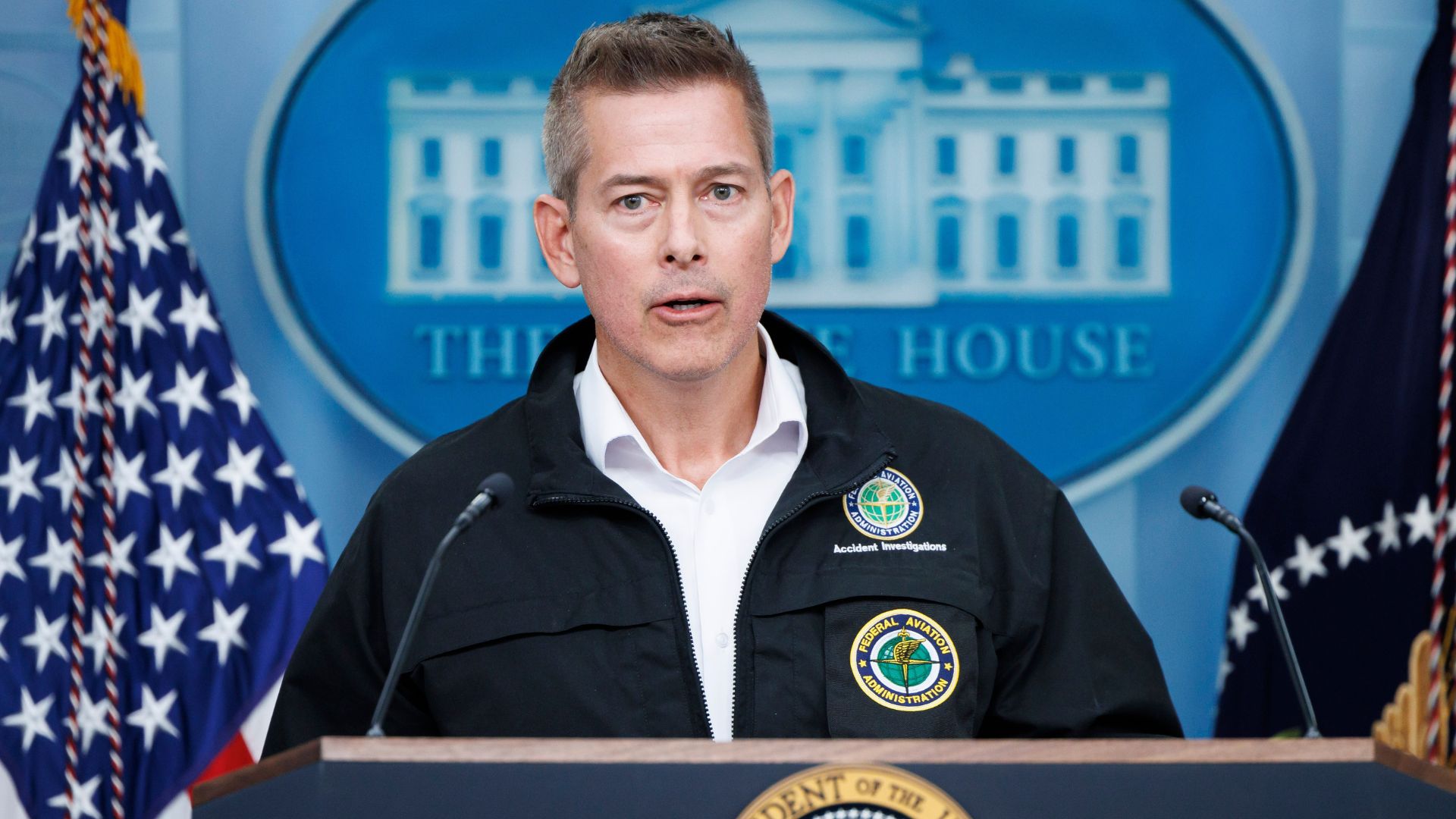
Secretary of Transportation Sean Duffy announced a new set of initiatives aimed at resolving the ongoing national shortage of air traffic controllers, including financial incentives to delay retirements and expanded training opportunities.
In an interview with CBS News, Duffy detailed a key component of the plan: offering a 20% salary bonus to eligible air traffic controllers who are nearing retirement, encouraging them to remain on the job longer while new hires are brought into the system.
“I think what is key, we have offered a bonus to air traffic controllers who are eligible to retire. We are going to pay them 20% bonus on their salary to stay longer. Don’t retire,” Duffy said.
“So as we bring more air traffic controllers in, and keep the older, experienced controllers, we’re going to be able to make up that difference.”
Trump’s Sovereign Wealth Fund: What Could It Mean For Your Money?
The Department of Transportation and the Federal Aviation Administration (FAA) have faced mounting pressure to resolve persistent staffing issues, which have contributed to delays and heightened safety concerns across the aviation sector.
Duffy acknowledged that although the measures are significant, resolving the shortage will take time.
“It will take months, if not years, to resolve the shortage,” Duffy said.
We’re supercharging air traffic controller hiring AND offering an incentive for older controllers to stay and help end the ATC shortage for good. No more passing the buck! pic.twitter.com/z76t6dvFMi
— Secretary Sean Duffy (@SecDuffy) May 25, 2025
This Could Be the Most Important Video Gun Owners Watch All Year
The issue has gained renewed urgency in recent months. On January 29, a midair collision between American Eagle Flight 5342 and a U.S. Army helicopter resulted in the deaths of all 64 individuals aboard the commercial flight and three crew members aboard the helicopter.
The incident intensified scrutiny on the nation’s air traffic control system, which has also faced challenges related to outdated technology and insufficient infrastructure investment.
Duffy’s February announcement to “supercharge the air traffic controller workforce” included multiple proposals to improve recruitment, retention, and training efficiency.
Earlier this month, the FAA revealed plans to expand the use of Tower Simulation Systems across U.S. airports.
These advanced systems are designed to allow air traffic controllers to train on complex airport layouts, simulate safety scenarios, and refine key coordination skills.
The FAA stated that the simulations would accelerate certification timelines and reduce training costs.
In addition to simulation technology, Duffy outlined further steps to streamline hiring.
These include expanding access to veteran military controllers, increasing financial incentives for trainees and recent graduates, and shortening the time it takes to obtain routine medical and security clearances—delays that have kept some qualified applicants waiting for over a year.
To address longstanding capacity issues at training facilities, the FAA is also increasing the number of instructors and establishing a new Learning Center at the FAA’s Air Traffic Controller Academy in Oklahoma City.
Meanwhile, the hiring process has been reduced from eight steps to five, part of a broader effort to simplify onboarding and fill critical vacancies more quickly.
Duffy, working in coordination with Acting FAA Administrator Chris Rocheleau, also announced immediate actions to improve air traffic operations at Newark Liberty International Airport.
Newark, one of the nation’s busiest travel hubs, recently experienced back-to-back air traffic control outages that further exposed system vulnerabilities.
With these measures now in motion, the Department of Transportation aims to stabilize the air traffic control workforce while improving operational safety and efficiency across the national airspace system.
Connect with Vetted Off-Duty Cops to Instantly Fulfill Your Security Needs

![Sean Duffy Scrambles to Fix FAA Shortages After Warnings Were Ignored for Years [WATCH]](https://www.right2024.com/wp-content/uploads/2025/05/Sean-Duffy-Scrambles-to-Fix-FAA-Shortages-After-Warnings-Were-750x375.jpg)
![Tulsi Gabbard Calls for Arrest of James Comey Over Call to Assassinate Trump [WATCH]](https://www.right2024.com/wp-content/uploads/2025/05/Tulsi-Gabbard-Calls-for-Arrest-of-James-Comey-Over-Call-350x250.jpg)


![Declaration Gaffe, Whisper Creep, and Conflicting Cancer Claims [WATCH]](https://www.right2024.com/wp-content/uploads/2025/05/Declaration-Gaffe-Whisper-Creep-and-Conflicting-Cancer-Claims-WATCH-350x250.jpg)

![Trump Drops Bombshell Video Linking Clintons to Mysterious Deaths [WATCH]](https://www.right2024.com/wp-content/uploads/2025/05/Trump-Drops-Bombshell-Video-Linking-Clintons-to-Mysterious-Deaths-WATCH-350x250.jpg)


![Bessent Exposes Media Lies About April’s Stock Market Performance [WATCH]](https://www.right2024.com/wp-content/uploads/2025/04/Bessent-Exposes-Media-Lies-About-Aprils-Stock-Market-Performance-WATCH-350x250.jpg)





